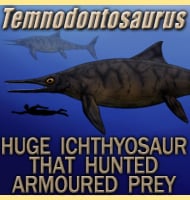In Depth
Jianianhualong is a genus of troodontind dinosaur that lived in China during the early Cretaceous. The holotype individual has an almost perfect state of preservation in the skeleton, and while some bones are not too clearly distinguished, the only significant thing missing from it is the tip of the tail. The whole animal from the tip of the snout to where the tail is missing is one meter. Accounting for additional vertebrae often seen in other troodontid dinosaurs has led the original describers to determine that this Jianianhualong was about up to one hundred and twelve centimetres long in life (not including the feathers). With the further observation that the skeleton is formed in such a way that it was certainly an adult at the time of death, Jianianhualong was towards the smaller end of the size scale for troodontid dinosaurs.
One of the most exciting discoveries concerning Jianianhualong is the discovery of feather impressions around the body, and particularly the tail. The tail feathers of Jianianhualong have been confirmed as being asymmetrical. The 2017 description of Jianianhualong was the first time that such feathers had been observed in a troodontid dinosaur. Before the description Jianianhualong other examples of asymmetrical feathers were usually seen in microraptoran dinosaurs, some of which have been speculated to have been capable of at least gliding flight.
There is no clear evidence to suggest that Jianianhualong was a flier (or at least a glider), as the feathers of the arms are not fully preserved in the holotype, meaning that the feather form of the arms is unknown. But just to tease us, the asymmetrical feathers on the tail are formed in such a way as to reduce drag, so that air flowed more smoothly over them when moving forward.
Jianianhualong is another of a growing number of troodontid dinosaurs known from the Yixian Formation, with other genera including Daliansaurus, Mei, Sinovenator, Sinusonasus, with even more related dromaeosaurs also present.
Further Reading
- Mosaic evolution in an asymmetrically feathered troodontid dinosaur with transitional features. - Nature Communications 8(14972). - X. Xu, P. Currie, M. Pittman, L. Xing, and Q.-J. Meng, J.-C., D.-Y. Hu & C.-Y. Yu - 2017.









